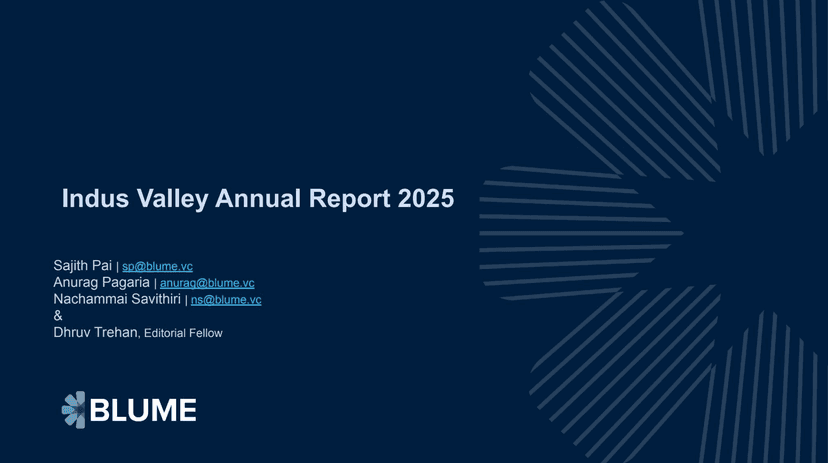
Summarising Blume's Indus Valley Report 2025
Here are our top 10 insights from this year's Indus Valley Report 2025👇
-
Consumption-Driven Economy with Deepening Inequality: India’s GDP is dominated by private consumption (56–60% of GDP), but the top 10% (India1) drive ~66% of discretionary spending. This segment is deepening (higher spending per capita) rather than widening, exacerbating economic inequality.
-
Formalization of the Economy: GST registrations surged from 6.8 million (2017) to 15.9 million (2024), while organized sectors (e.g., jewelry, real estate, and retail) are gaining market share, signaling a structural shift from informal to formal markets.
-
Savings Crisis and Gold Obsession: Household financial savings dropped to 5.1% of GDP (from 10.1% in 2000), driven by rising personal debt. Gold remains a preferred collateral due to land-title inefficiencies, impacting India’s current account deficit.
-
Human Capital Challenges: Youth unemployment rises with education levels (28.7% for graduates vs. 3.2% for non-graduates). Underinvestment in primary education and a focus on tertiary education hinder workforce readiness.
-
Manufacturing Struggles Despite PLI Push: Manufacturing’s GDP share (13%) lags behind peers like China (26%). While PLI schemes boosted electronics exports (37x growth since 2017), India missed capturing China+1 opportunities, with Vietnam benefiting more.
-
Digital Public Infrastructure (DPI) Dominance: UPI processed ₹245 trillion ($3 trillion) in 2024, capturing 83% of digital transactions. DPI-enabled welfare schemes and platforms like ONDC are reshaping commerce, though profitability remains elusive for payment providers.
-
Venture Funding: Seed Boom, Late-Stage Lag: Seed rounds are larger (“mango seeds” >$3M) but fewer (-57% since 2021). MicroVCs fill early-stage gaps, while late-stage funding shrinks to 59% of total VC inflows, pushing startups toward SME IPOs and venture debt.
-
Quick Commerce’s Meteoric Rise: Quick Commerce GOV grew 24x since 2022, driven by hyperlocal dark stores and low labor costs. However, projections of 128 million MTUs by 2031 face skepticism due to India1’s limited widening and market saturation risks.
-
AI Sovereignty Ambitions: India aims to build foundational AI models, leveraging ₹20,000 crore ($2.4B) in government funding and frugal innovation (e.g., DPI, ISRO). Startups like Invideo AI and E2E Networks showcase niche success, but talent gaps persist.
-
Diaspora Power (India0): The 35-million-strong Indian diaspora, contributing $107B in remittances (2024), is a high-value market. Brands like Inde Wild and DLF target them via cultural nostalgia, luxury goods, and real estate investments.
Find the full report here - https://docsend.com/view/pyxuqunkm9ejw38q


